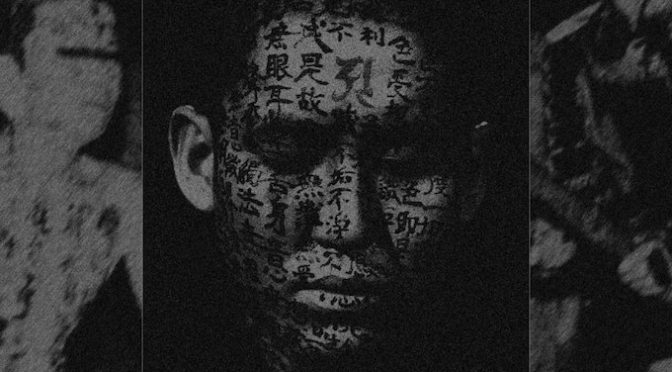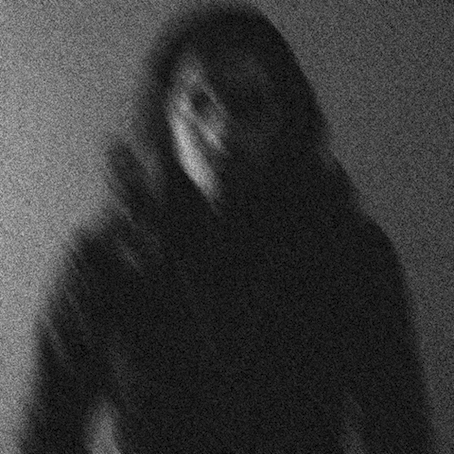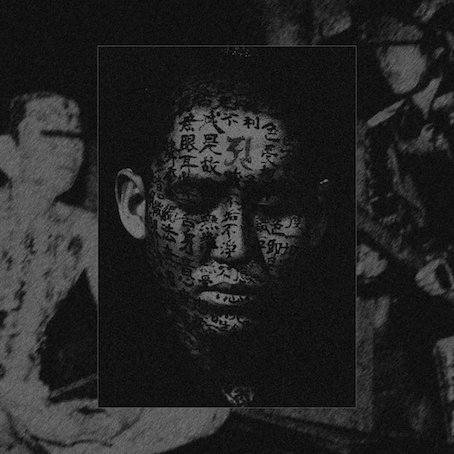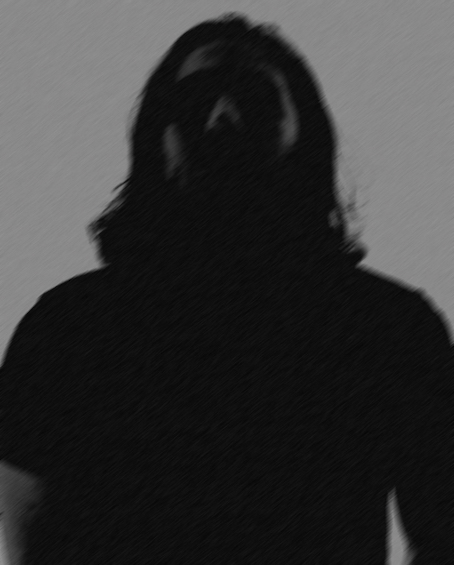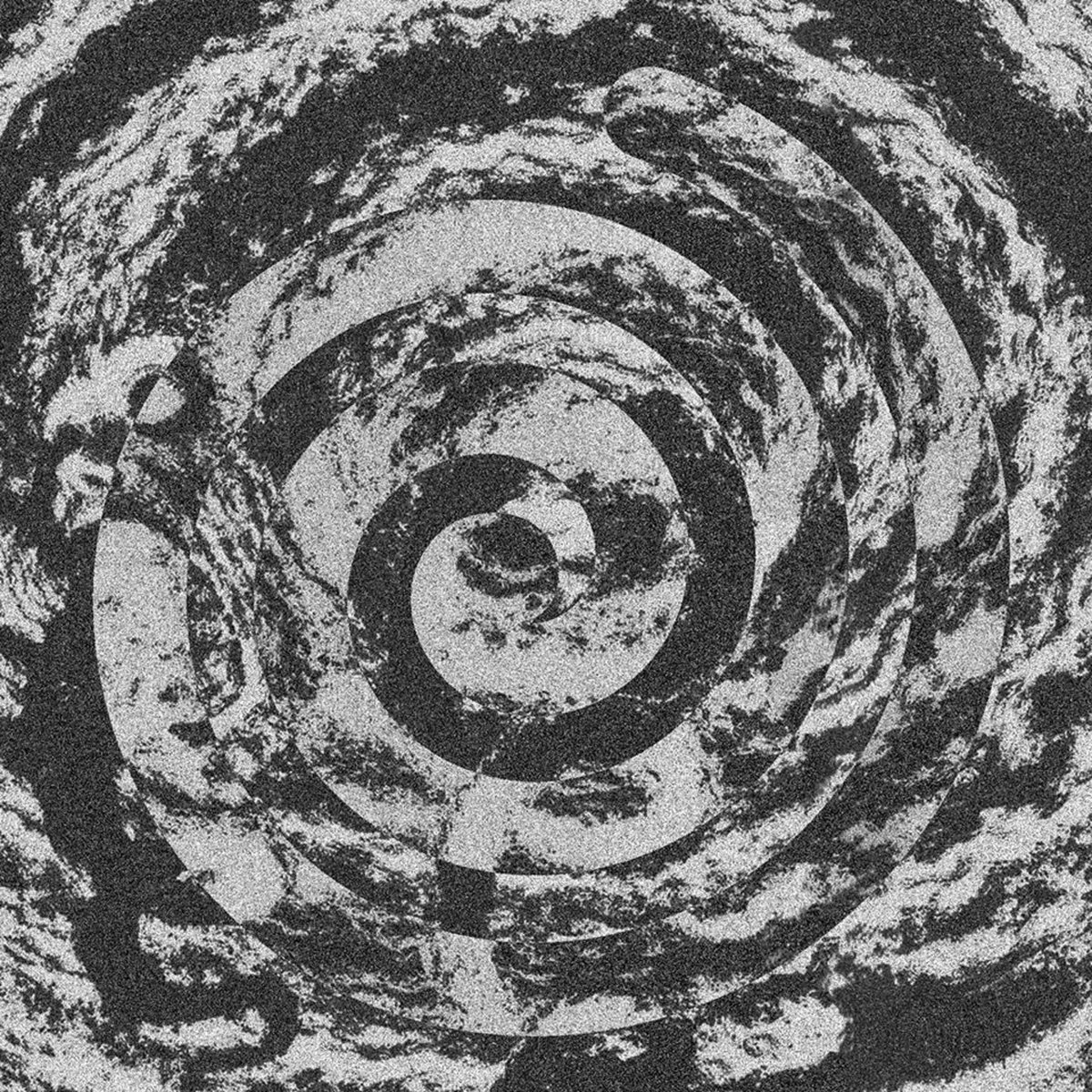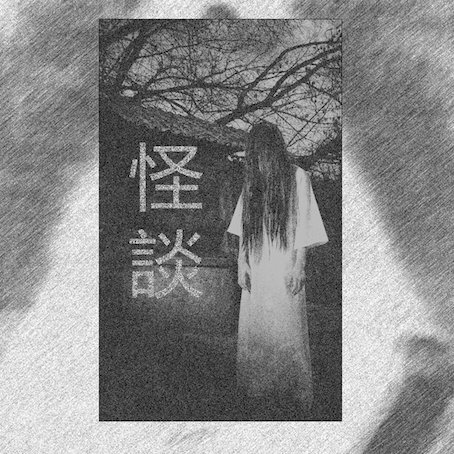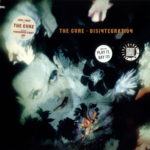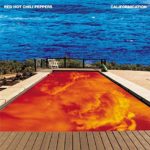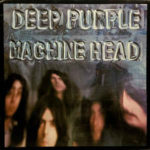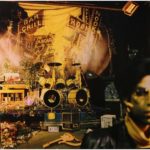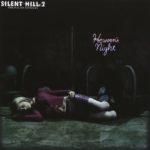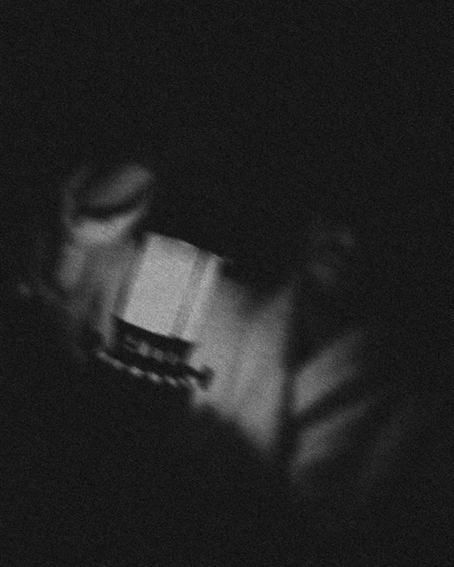EXCLUSIVE: INTERVIEW WITH IER !!
“Dir en grey Is One Of My Main Influences, And Also One Of My Favourite Bands Ever. They Are Really Original And Creative, But Sadly That Kind Of Japanese Bands Don’t Get Much Attention In The West.”
DISC REVIEW “妖怪”
「アルゼンチンでは、僕の世代の多くの子供たちが日本文化に触れて育っているんだ。90年代はアルゼンチンにグローバリゼーションと新自由主義をもたらした。ケーブルテレビではたくさんのアニメが放送され、いくつかの出版社が多くの漫画の権利を取得し国内で商業化を始めたんだ。90年代後半には、スペイン語でアニメを紹介する雑誌まで出版され、アニメやコスプレの大会も開催されるようになってね。」
まさに地球の裏側、アルゼンチンでこれほどまでに日本文化が花開いているなどと誰が想像したでしょうか。IER の首謀者 Ignacio Elías Rosner は、音楽で日本の怪談を紡ぎその流れを牽引する越境の使者に違いありません。
「怪談に関しては、表現しているテーマの多さに魅了されているんだ。日本人は超自然や死後の世界に対する理解が非常に異なっている。西洋の信仰とのコントラストはとても強く、僕たちを魅了し、同時に怖がらせてくれるんだ。個人的には、それらの民話や伝説、伝統が、僕が好きだったアニメや映画の至る所にあったからこそ、自分の子供時代の一部を代表していると言えるんだ。」
ケーブルテレビで目にしたドラゴンボールや聖闘士星矢、エヴァンゲリヲン。プレイステーションでリリースされるサイレント・ヒルやファイナル・ファンタジーの魅力的ソフトの数々。Ignacio はアルゼンチンに放たれたジャパニーズ・サブカルチャーの虜となり、その場所から日本の音楽や伝統文化、哲学へと歩みを進めていきました。
「怪談の復讐、抑圧、永遠の不幸、孤独、憂鬱、怒り、喪失感、失恋などのテーマは、僕が IER で取り組みたいと思っていたものと同じだった。日本文化に立ち返って、同時に比喩で表現する方法を与えてくれたんだよね。登場人物、状況、行為を通して、僕は多くの感情を外に出すことができ、同時に奇妙で不穏な雰囲気を作り出すことに成功したのさ。」
すべてを Ignacio 一人で収録する IER の J-Horror 四部作は完結へと向かっています。”怪談”、”うずまき”、そして95分の狂気 “妖怪” は壮大なコンセプトの第三幕。アルバムや楽曲タイトルを、漢字を含む日本語で表記する時点で Ignacio の本気と知性が伝わりますが、それ以上に伊藤潤二や日本のホラー映画、怪談を読み込み、分析して音に再現するその異能はある意味常軌を逸しています。
「Dir en grey は大きな影響を受けたバンドの一つで、これまでで一番好きなバンドの一つでもある。彼らは本当に独創的で創造的なんだけど、悲しいかな、この手の日本のバンドは欧米ではあまり注目されていないんだよね。例えば、アルゼンチンではほとんどの人が Dir en grey のことを「アニメ音楽」だと言うだろうから。」
西洋で生まれた恐怖と憂鬱の最高峰、ブラックメタルをプログレッシブに奏でながら、日本の音の葉を織り込む手法こそ Ignacio の語り口。原点である凶暴なカオスは、V系の美学、Dir en grey や Sukekiyo の複雑怪奇、邦画やゲームのサンプリング、伝統芸能のしきたりをカウンターとして絶妙なコントラスト、恐怖のジェットコースターを描き出します。
その情緒に、アルゼンチン由来のラテンやアコースティック、フォーク、スペイン語を重ねた唯一無二は、間違いなく西欧の例えば CANNIBAL CORPSE 的ショックホラーや猟奇よりも、不穏で不気味で奇怪に感じられるはずです。中でも、日本語で皿の数を怒号する “皿屋敷” の恐ろしさは白眉。
今回弊誌では、アルゼンチンのメタル法師 Ignacio にインタビューを行うことができました。「”うずまき” の映画化の監督であるヒグチンスキーは、僕が映画からのサンプルを含む “うずまき” アルバムをリリースした後に連絡してきてね。最初は彼が怒るのかと思ったけど…。それどころか、全然違うんだよ。彼は感激してくれて、法的な問題を避けるために、映画の権利を持っていた映画会社に連絡するのを手伝ってくれたんだ。ありがたいことに、僕は著作権侵害をしていなかったし、ヒグチンスキーは自分のSNSでアルバムをシェアしてくれたんだよ!」 どうぞ!!
IER “妖怪” : 10/10
INTERVIEW WITH IER
Q1: Argentine metal is well known in Japan, for Rata Blanca and Skiltron have visited Japan. First of all, could you tell us how you got into metal in Argentina?
【IGNACIO】: First of all, thank you for having me! I wasn’t aware Rata Blanca and Skiltron visited Japan! How cool is that?
I got into metal in my early teens. As a pre-teen, I already was into hard rock and progressive music: AC/DC, Led Zeppelin, Deep Purple, Creedence Clearwater Revival, Pink Floyd, Rush, Genesis, Yes, King Crimson, etc. I got into those bands thanks to a lot of people I met in my childhood: teachers, friends of the family and even my dentist.
Classic heavy metal was the next step: Iron Maiden, Judas Priest, Megadeth and Metallica were my first metal bands. When I was 12, my parents bought our family’s first PC: that was a game changer thanks to the Internet! There was a lot of valuable information there regarding metal bands, especially on forums.
Q1: アルゼンチンのメタルといえば、日本では RATA BLANCA や来日を果たした SKILTRON が有名です。あなたはどうやってアルゼンチンでメタルにハマっていったのですか?
【IGNACIO】: まずは、インタビューをありがとう!彼らが来日していたとは知らなかったね! クールだよ!
僕がメタルにハマったのは10代前半だったね。その頃からハードロックやプログロックにハマっていったんだ。AC/DC, LED ZEPPELIN, DEEP PURPLE, CCR, PINK FLOYD, RUSH, GENESIS, YES, KING CRIMSON みたいなバンドさ。僕がこういったバンドにハマったのは、子供の頃に出会った多くの人たちのおかげなんだ。先生、家族の友人、歯医者さんでさえね。
クラシックメタルは次のステップだったよ。IRON MAIDEN, JUDAS PRIEST, MEGADETH, METALLICA がはじめてのメタルバンドだったね。僕が12歳の時、両親が家族のために最初のPCを購入したんだ。それを使って特にフォーラムで、メタルバンドに関する貴重な情報を得ていたんだよ。
Q2: Actually, what is the metal scene like in Argentina? What do you think about the country, its culture, its history and its politics?
【IGNACIO】: Regarding the metal scene in Argentina, I can’t really say about what’s going on right now. I lost interest in heavy metal culture (clothing, codes, collecting records, etc.) a bunch of years ago, so I’m no longer a metalhead. Of course, I still love metal music and I still have metal bands, but nowadays I’m kind of an outsider.
Last time I checked, there were a couple of big bands that played the more common metal subgenres (classic metal, groove, thrash), but truth is they aren’t playing any big venues nor they have a mainstream presence. Metal was really popular in the 90s, but I didn’t experience that. Undisputedly, the most well-known artist is Ricardo Iorio, which was part of a lot of historical metal bands. Plus, he’s very well known in the mainstream and in the media due to the fact he has become some sort of walking meme.
The aforementioned Rata Blanca is also a very well-known band in the mainstream. There was also a nu/alternative metal band called Carajo that was really popular, even with non-metalheads: sadly they split-up a year ago or so. But this kind of bands, they don’t get the respect they deserve because they are “false metal” or some made up shit like that. There’s a lot of stupid elitism in metal, and the Argentine scene is really sad when it comes to that. That’s one of the reasons I stopped identifying as a metalhead. But well, that was a couple of years back, so maybe there’s still some time for things to change!
In the more underground circuits, there was a stoner/sludge metal craze like 10 years ago. Those were really cool times: lots of great bands and lots of venues hosting metal shows. I’m proud to say I was part of that with my band Uroboros (we play death/sludge metal). Sadly, not many bands from that era are still playing, which is a pain in the ass when it comes to organizing show. There are not many bands available, and there’s also the problem with the clubs…
We had one of the longest quarantines in the world due to COVID. It hit the economy really hard, and most of the small venues that welcomed underground metal bands had to close permanently. Really sad, because finding a venue for metal musicians in Buenos Aires is HELL. And now, with those small clubs out of the picture, is going to be really hard to play live when we go back to normal (if we ever go back to normal).
Regarding my country, I love Argentina! When it comes to politics and economy, it’s been on downhill since forever due to corruption and bad administration, no matter the party nor its ideology. Culturally, we have a very rich Hispanic/Catholic tradition due to our time as a Spanish colony, but that influence varies depending on the province you are. The country is huge and beautiful, and the further you get from Buenos Aires, the prettier it gets! I’d love to have the money and time to travel to each province and discovers their culture and landmarks.
Q2: アルゼンチンのメタルシーンはどのような状況ですか?あなたはアルゼンチンという国の文化、政治、歴史についてどう感じていますか?
【IGNACIO】: アルゼンチンのメタルシーンについてだけど、今の状況については何とも言えないな。数年前にメタル文化(服、レコード収集など)に興味を失ってしまったからね。もうメタルヘッドではなくなってしまったんだろう。もちろん、今でもメタルは好きだし、メタルバンドもやっているけど、今の僕はアウトサイダーみたいな感じさ。
以前、アルゼンチンのシーンをチェックした時には、より一般的なメタルのサブジャンル(クラシックメタル、グルーヴ、スラッシュ)を演奏するビッグバンドがいくつかあったんだけど、実際のところ、彼らは大きな会場で演奏していないし、メインストリームの存在感もないんだ。メタルは90年代に本当に人気があったけど、僕はそれを経験していない。議論の余地なく、最も有名なアーティストはリカルド・イオリオで、多くの歴史的なメタルバンドの一部だったんだ。加えて、彼はある種の歩くミームになっているといるから、メインストリームやメディアでは非常によく知られているんだよ。
前述の RATA BLANCA もメインストリームでは非常に有名なバンドだね。CARAJO という Nu/オルタナメタル・バンドもあって、彼らは非メタルヘッズにも人気があったね。でも、この手のバンドは「偽メタル」とかでっち上げられていて、尊敬されていないんだよね。メタルにはくだらないエリート主義が多くて、アルゼンチンのシーンは本当に悲しいものだよ。それがメタルヘッドをやめた理由の一つなんだ。でも、それは数年前のことだから、また時間が経てば状況が変わるかも知れないね!
もっとアンダーグラウンドでは、10年ほど前にストーナー/スラッジ・メタルが流行っていたんだ。あの頃は本当にクールな時代だったよ。僕は自分のバンド UROBOROS (デス/スラッジメタル) でその一部だったことを誇りに思うよ。悲しいことに、その時代のバンドがまだ現存していることは少なくて、ショーを企画するのが大変なんだよね。空いているバンドが少ないし、クラブの問題もあるし…。
アルゼンチンは、コロナの影響で世界で最も長い間隔離されていたんだ。経済的にも大変な打撃を受け、アンダーグラウンドのメタル・バンドを歓迎していた小さな会場のほとんどが永久的に閉鎖せざるを得なくなったんだ。そもそもブエノスアイレスでメタル・ミュージシャンのための会場を見つけるのは大変だったので、本当に悲しいよね。小さなクラブがなくなってしまったから、通常の状態に戻った時ライブをやるのは本当に難しいと思うよ。
自分の国についてだけど、もちろんアルゼンチンが大好きだよ。政治や経済に関しては、政党やイデオロギーに関係なく、汚職や悪政のせいで永遠の下り坂になっているんだ。文化的には、スペインの植民地だったから、ヒスパニック/カトリックの伝統が非常に豊かだけど、その影響は州によって異なるね。国は広大で美しく、ブエノスアイレスから遠くなればなるほど美しくなる。お金と時間があれば、それぞれの州を旅して、それぞれの文化や名所を発見してみたいものだね。
Q3: I think IER is an acronym for your name, but still, it’s great that you’re doing it all by yourself! Why did you start this project by yourself?
【IGNACIO】: You are correct: IER stands for my full name (Ignacio Elías Rosner).
I started the project as some sort of joke/experiment: I was fooling around with Ableton Live, doing some house/techno beats. I quickly got the hang of it, so I wondered if could record some black metal. I tried and the result was horrible, but it made me realize I had a real way to record my own music that way.
Also, there are some things that I can’t express through my main band, Uroboros. I didn’t want to bring my negative side to the band, but I was having the need to externalize it in some sort of way. Thus, IER was the perfect medium for doing that, like some sort of therapy.
Q3: IER とはあなたの名前の頭文字だと思うのですが、すべての楽器を一人でこなしていますよね?
【IGNACIO】: そうだね、IERは僕のフルネーム(Ignacio Elías Rosner)の略だよ。
このプロジェクトはある種のジョーク/実験として始めたんだ。最初は Ableton Liveを使ってハウス/テクノビートを作っていたんだ。すぐにコツを掴んだから、ブラックメタルを録音できないかと思ってね。試してみたんだけど、結果は最悪だった。だけど自分の音楽を録音する真の方法があることに気づかせてくれた。
あと、自分のメインバンドである UROBOROS では表現できないものがあるんだよね。自分のネガティブな部分をバンドに持ち込みたくなかったんだけど、それを何かの形で外に出したいという気持ちがあってね。だから、IERはそれを行うための完璧な媒体であり、ある種のセラピーのようなものだったんだね。
Q4: When I first learned about “Yokai”, I suspected that it was made by Japanese people. The title is in Chinese characters and there is a story and a background that you can only understand if you are familiar with Japanese culture. Are you really into Japanese culture?
【IGNACIO】: Funny you mention it: a lot of people thought I was Japanese! Some even thought I was a Japanese living in Argentina, which was hilarious!!!
I love Japanese culture. I like to learn about different countries and cultures, the more ancient the better: that was one of the many reasons I became a historian.
Regarding Japanese culture specifically, many kids from my generation grew up with it. The 90s brought to Argentina globalization and neoliberalism (at a terrible price, of course). Cable television aired lots of anime, and some publishers got the rights to a lot of manga and started to commercialize them in the country. By the late 90s, there even appeared Spanish speaking magazines about anime and also some anime/cosplay conventions.
During this time, there were two channels that had the most impact on me: Magic Kids and Locomotion. Magic Kids was a children oriented channel, thus it aired anime such as Dragon Ball, Sailor Moon, Saint Seiya, Captain Tsubasa, Ranma ½, Slayers, Hunter X Hunter, Orphen, Escaflowne, Bt’ X, Case Closed, or Slam Dunk. That was my early introduction to anime.
Locomotion was a different kind of beast: it was more of an art-house thing, because not only it focused on anime series, but also on music, film and many other audiovisual stuff. They were an adult-oriented channel, but most parents in the 90s weren’t really strict with what we were watching on TV! It had really edgy anime, such as Neon Genesis Evangelion, Cowboy Beebop, Lupin III, Pet Shop of Horrors, Boogiepop Phantom, Serial Experiments Lain, Alexander Senki, Eat-Man, Nightwalker and Blue Seed. It also had films like Akira, Battle Angel Alita or Ghost in the Shell. That’s when I really became attracted to that kind of anime.
There was also another important fact: videogames. I owned a PlayStation, which had a lot of awesome games developed by Japanese studios. Metal Gear Solid, Resident Evil, Final Fantasy VII to IX, Parasite Eve, Xenogears, Vagrant Story… And my personal favourite: Silent Hill. I became a really big fan of Silent Hill and got in touch with a lot of fans from around the world thanks to the internet. There I discovered a lot of the series’ influences, which was really eye-opening for an 11 years old kid.
During that time, Hollywood was producing a lot of horrible J-Horror remakes: The Ring, The Grudge, Pulse, you name it. I remember being scared of those films, but at the same time being fascinated by their plot, their subtexts and their aesthetics. Same thing happened to me with the Silent Hill videogames. In those forums, people recommended me to go straight to the source: Ringu, Ju-On, Kairo, Dark Water, you name it! That really changed my life.
I’m a big fan of the J-Horror genre, but sadly it has lost its magic. I remember an interview with John Carpenter were he said that the genre has lost its magic due to how Hollywood exploited its clichés: I couldn’t agree more! Still, that was my gateway to Asian cinema, and thus I got enthralled by directors such as Takashi Miike, Sion Sono or Kiyoshi Kurosawa.
Surprisingly, I’m not what most people here would call a “weaboo” or an otaku (quite the contrary), but I got a huge interest in Japanese artistic productions. J-Horror tends to use a lot of folkloric and spiritual elements that are innate to Japanese culture, so I ended up being fascinated by the classic Kaidan, Shinto and the like. The cultural contrast is really different to what we westerners are used to, so it is naturally very interesting!
Q4: 初めてこの作品を知った時は、日本人の覆面プロジェクトかと疑いました。タイトルは漢字ですし、日本の文化にかなり精通していなければ知り得ないテーマですからね。
【IGNACIO】: 君がそう言うのは面白いよね。実際、多くの人が僕を日本人だと思っていたんだから。アルゼンチンに住んでいる日本人だとね。
僕は日本の文化が大好きなんだ。様々な国や文化について学ぶのが好きで、それが古ければ古いほど良いんだよね。
特に日本文化に関しては、この国では僕の世代の多くの子供たちが触れて育っているんだ。90年代はアルゼンチンにグローバリゼーションと新自由主義をもたらした。ケーブルテレビではたくさんのアニメが放送され、いくつかの出版社が多くの漫画の権利を取得し国内で商業化を始めたんだ。90年代後半には、スペイン語でアニメを紹介する雑誌まで出版され、アニメやコスプレの大会も開催されるようになってね。
この時期、僕に最も影響を与えたのは2つのチャンネルだった。Magic Kids と Locomotion だよ。Magic Kids は子供向けのチャンネルで、ドラゴンボール、美少女戦士セーラームーン、聖闘士星矢、キャプテン翼、らんま1/2、スレイヤーズ、ハンターXハンター、オーフェン、エスカフローネ、B’T-X、名探偵コナン、スラムダンクなどのアニメを放送していたね。それが僕のアニメ入門だったんだ。
Locomotion は、アニメシリーズだけでなく、音楽や映画、その他の視聴覚系のものにも力を入れていたアートハウス的なものだった。大人向けのチャンネルだったけど、90年代の親たちはほとんど、僕たちがテレビで見ているものに対してそれほど厳しくなかったんだ!新世紀エヴァンゲリオン、カウボーイ・ビバップ、ルパン三世、Petshop of Horrors、ブギーポップ・ファントム、serial experiments lein、アレクサンダー戦記、EAT-MAN、Night Walker、BLUE SEED など、本当にエッジの効いたアニメがあったね。AKIRA、アリータ: バトルエンジェル、攻殻機動隊といった映画もあったよ。その頃から、そういうアニメに惹かれたんだ。
もう一つ重要なことがあってね。僕が持っていたプレイステーションには、日本のスタジオが開発した素晴らしいゲームが揃っていたんだ。メタルギア・ソリッド、バイオ・ハザード、ファイナル・ファンタジーVII~Ⅸ、パラサイト・イヴ、ゼノギアス、ベイグラント・ストーリー…、そしてサイレント・ヒル。僕はサイレント・ヒルの大ファンになり、インターネットのおかげで世界中の多くのファンと連絡を取り合うようになったんだ。影響を受けたね。11歳の子供にとって、このシリーズには多くの発見があったから。
その頃、ハリウッドでは恐ろしい J-Horror のリメイク作品が続々と作られていたんだ。リング、グラッジ、パルスみたいなね。僕は本当に怖かったけど、同時にそれらの映画の筋書きや文脈、美学に魅了されていたんだよ。サイレント・ヒルにも同じことが起こったね。フォーラムでは、みんなが日本の原作に進むことを勧めてくれたんだ。リング、呪怨、回路、仄暗い水の底から、何でもいいんだよ!それが僕の人生を大きく変えたんだ。
僕はハリウッドの J-Horror というジャンルの大ファンだけど、悲しいかな、今ではその魔法を失ってしまっているよね。ジョン・カーペンターのインタビューで、ハリウッドがクリシェを多用しすぎて、このジャンルは魔法を失ってしまったと言っていたのを覚えているよ。だけど、それが僕のアジア映画への入り口となってくれたんだ。三池崇史、園子温、黒沢清などの監督に夢中になったよ。
意外なことに、僕は一般的に言われるような「ウィーブー」(日本が大好きな西洋人) や「オタク」ではないんだけど(逆に)、日本の芸術作品にはものすごく興味を持っていたんだ。J-Horror は、日本文化に根付いた民俗的・精神的な要素を多用する傾向があるから、結局、古典的な怪談や神道などに惹かれてしまったんだよね。西洋人が慣れ親しんでいるものとは文化的なコントラストが異なるから、とても面白いんだよ。
Q5: Why did you choose the theme of Yokai? How did you come to know about the story of for example, Sara-yashiki and Hoichi Mimiashi?
【IGNACIO】: The actual theme of the Yokai album is loneliness. The previous albums on this J-Horror inspired tetralogy are based around different themes: Kaidan is based on rage, and Uzumaki is based around fear.
I chose Yokai to illustrate loneliness through tragedy. I wanted this to be a collection of stories linked to the supernatural. Lyrics are still personal, but I like to use metaphor for the different themes I present. On Kaidan, rage was personified in the yurei, due to their vindictive nature. On Uzumaki, I used Junji Ito’s lovecraftian horror to exemplify the fear of the unknown. In this case, the Yokai represent the loneliness and isolation of this beings from the human world, and their conflicting relationship with it. To be honest, I don’t know if I’m making a correct interpretation of it, but that’s the way I feel about this different tales (be it a classic film or a folk tale).
I learnt Hoichi’s story thanks to Masaki Kobayashi’s 1964 film Kaidan, one of my personal favourites. In fact, the album’s cover art is a still from the film, featuring Hoichi. Regarding Sarayashiki, I learnt from it while reading about Ringu: I understand Okiku was an influence for Sadako’s character.
Q5: 妖怪と言うテーマでアルバムを作ったのはなぜですか?皿屋敷や耳なし芳一といった怪談はどこで知ったのでしょう?
【IGNACIO】: “妖怪” アルバムのテーマは「孤独」。このJ-Horror 四部作の前作は、それぞれが異なるテーマに基づいているよ。第1作の”怪談” は怒りをテーマにしていて、次作の”うずまき” は恐怖をテーマにしているんだ。
妖怪を選んだのは、悲劇による孤独を表現するため。超常現象とリンクした物語の集大成にしたいと思ったんだ。歌詞は個人的なものだけど、僕が提示する様々なテーマのために比喩を使うのが好きなんだ。
“怪談” では、怨嗟の念にかられた怒りを「幽鬼」に擬人化した。”うずまき” では、伊藤潤二のラブクラフティアン・ホラーを使って、未知の世界への恐怖を表現しているよ。今回の “妖怪” は人間界からの孤独と孤立、そして人間界との葛藤を表現しているんだよね。正直なところ、正しい解釈をしているかどうかはわからないけど、このような異色の物語(古典映画であれ民話であれ)に僕はそう感じているんだよ。
僕が芳一の話を知ったのは、小林正樹監督の1964年の映画『怪談』(個人的に好きな作品の一つ)のおかげだね。実際、このアルバムのカバーアートは映画のスチール写真で、芳一が登場しているんだ。皿屋敷については、リングから学んだよ。お菊は貞子のキャラクターに影響を与えたと理解しているからね。
Q6: On the album, sometimes you sing in Japanese, for example on “Sara Yashiki” 1, 2, 3 and 4, and there are often spoken words lines taken from Japanese films or TV. What kind of films did you take them from?
【IGNACIO】: I hope I pronounced those numbers ok! I can’t speak/read Japanese, but I’d love to learn the language someday. The bonus Dir en grey cover was a real challenge: I had to do it by phonetics! Hope Japanese listeners finds it acceptable!
Regarding the samples, I took them from different J-Horror films: Ringu, Kaidan, Dark Water, Kairo, Noroi, Marebito, Jigoku and Tokaido Yotsuya kaidan. I also sampled J-Horror videogames, which are a great influence in my music too: Silent Hill, Project Zero and Siren.
I love sampling and consider the resulting samples some sort of an instrument, like synths or FX. I always credit the original source, because I know there’s a lot of controversy due to the legal aspect of it. In order to avoid that, I use either visual media that is public domain or I modify/cut the sample in order to avoid breaking any copyright laws. And, of course, when in doubt I go directly to the source and ask for permission.
Back in 2019 I had an incredible experience due to the whole sampling thing: Higuchinsky, director of the Uzumaki film adaption, contacted me after I released the Uzumaki album, which contains samples from the film. At first I thought he was going to be mad… Quite the contrary! He was blown away by it, and he even helped me contact the film company that used to have the rights to the film in order to avoid any legal problems. Thankfully I wasn’t doing any copyright infringement, and Higuchinsky even shared the album in his social media!
Q6: “皿屋敷” のように、いち、に、さん、しとあなたが日本語で歌う場面もありますね。それに、アルバムには映画やアニメから引用したようなスポークンワードも収録されています。
【IGNACIO】: 数字の発音は大丈夫だったかな?僕は日本語を話すことも読むこともできないけど、いつか日本語を勉強したいと思っているよ。ボーナスの Dir en grey のカバーは本当に難しかったね。日本のリスナーにも受け入れられるといいんだけど。
サンプルについては、様々な J-HORROR 映画から取っている。リング、怪談、仄暗い水の底から、回路、呪い、稀人、地獄、東海道四谷怪談、だね。また、J-Horror のゲームもサンプリングしているよ。ゲームは僕のの音楽にも大きな影響を与えているんだ。サイレント・ヒル、プロジェクト・ゼロ、サイレン。
僕はサンプリングが大好きで、得られるサンプルはシンセやFXのような楽器のようなものだと思っているんだ。法的な面で多くの論争があることは知っているから、僕は常にオリジナルのソースをクレジットしているよ。それに、パブリックドメインのビジュアルメディアを使用するか、著作権法に抵触しないようにサンプルを修正したりカットしたりもしているんだ。そして、もちろん、疑問があるときは、直接許可を求めるよ。
2019年に戻って、僕は全体のサンプリングのことで信じられないような経験をしたんだ。”うずまき” の映画化の監督であるヒグチンスキーは、僕が映画からのサンプルを含む “うずまき” アルバムをリリースした後に連絡してきてね。最初は彼が怒るのかと思ったけど…。それどころか、全然違うんだよ。彼は感激してくれて、法的な問題を避けるために、映画の権利を持っていた映画会社に連絡するのを手伝ってくれたんだ。ありがたいことに、僕は著作権侵害をしていなかったし、ヒグチンスキーは自分のSNSでアルバムをシェアしてくれたんだよ!
Q7: Musically, I found IER to be basically progressive depressive black metal, but very dramatic and often with influences from Japanese visual kei like Dir en Grey. Do you listen to any Japanese bands?
【IGNACIO】: Thanks for the kind words! Dir en grey is one of my main influences, and also one of my favourite bands ever. They are really original and creative, but sadly that kind of Japanese bands don’t get much attention in the West. For example, in Argentina most people will say that Dir en grey is “anime music”… Their loss!!!
I listen to a lot of Japanese music, regardless the genre. I got into it thanks to X-Japan, even having the privilege of attending to their only live show in Argentina back in 2011. In fact, Hide was a really big influence for me as a guitar player during my early teens.
Besides Dir en grey, I could list some Japanese artists I enjoy: Akira Yamaoka, Sukekiyo, Yellow Magic Orchestra (including Sakamoto and Hosono’s solo works too, of course), Boredoms, Sigh, Kuroyume, Buck Tick, D’erlanger, Boris, L’Arc~en~Ciel, Malice Mizer, Kinoko Teikoku, Luna Sea, Mono, Galneryus, Sex Machineguns, Shinichiro Yokota, Coffins, Merzbow, Intestine Baalism, Satoshi Tomiie, Maximum the Hormone, The Stalin, Cohol, The Gazette, Versailles, Tokyo Shoegazer, G.I.S.M., Heaven in Her Arms… And I could go on and on!!!
Recently, I’ve been obsessed with city pop: Tatsuro Yamashita, Taeko Ohnuki, Mariya Takeuchi, Toshiki Kadomatsu and the likes. I’m a big fan of Luis Miguel, and his style in the late 80s was really similar to city pop, which made me instantly fall in love with the genre.
Curiously, I’ve also been digging into Japanese acts that play Latin music: for example, Orquesta de la Luz, Los Awkis and Orquesta Sakamoto. I’m fascinated by how the singers can copy mannerisms and accents just by phonetics, and also by how passionately the can recreate the instrumental sections. I remember hearing Orquesta Sakamoto performing “En esta tarde gris” thinking they were some old Argentine tango ensemble: as soon as I watched the video and noticed they were Japanese, I was left speechless!!!
Q7: 音楽的には、プログレッシブなディプレッシブ・ブラックメタルがベースとなっているように思うのですが、Dir en grey のような日本のV系バンドからの影響も多く伺えますね。
【IGNACIO】: ありがとう!Dir en grey は大きな影響を受けたバンドの一つで、これまでで一番好きなバンドの一つでもある。彼らは本当に独創的で創造的なんだけど、悲しいかな、この手の日本のバンドは欧米ではあまり注目されていないんだよね。例えば、アルゼンチンではほとんどの人が Dir en grey のことを「アニメ音楽」だと言うだろうから。
僕はジャンルを問わず、日本の音楽をたくさん聴いているんだ。2011年にアルゼンチンで行われた X-Japan のライブのおかげで、日本の音楽にのめり込んでいったよ。実際、10代前半の頃、ギタリストとしては Hide の影響が大きかったからね。
Dir en grey の他にも、僕が好きな日本のアーティストをいくつか挙げてみようか。山岡晃、Sukekiyo、Yellow Magic Orchestra(もちろん坂本や細野のソロも含む)、Boredoms、Sigh、黒夢、Buck-Tick、D’erlanger、Boris、L’Arc~en~Ciel、Malice Mizer、キノコ帝国、Luna sea、Mono、Galneryus、Sex Machineguns、Shinichiro Yokota、Coffins、 Merzbow、 Intestine Baalism、富家哲、Maximum the Hormone, The Stalin, Cohol, The Gazette、 Versailles、Tokyo Shoegazer、G.I.S.M.、Heaven in Her Arms… 他にも色々あるんだよ!
最近はシティポップにはまっているんだ。山下達郎、大貫妙子、竹内まりや、角松敏生など。僕はルイス・ミゲルの大ファンなんだけど、80年代後半の彼のスタイルはシティ・ポップにとても似ていて、一瞬にしてこのジャンルを好きになったよね。
不思議なことに、僕は日本のラテン音楽を演奏するアーティストにも興味を持っていて、例えばOrquesta de la Luz、Los Awkis、Orquesta Sakamoto 。Orquesta Sakamoto の “En esta tarde gris” を聴いて、アルゼンチンの古いタンゴのアンサンブルかと思ったのを覚えているよ。
Q8: Japanese horror stories, Kaidan have a different kind of creepiness to their western horror stories. This album is a perfect example of that feeling. Comparing Argentine horror stories, what’s japanese Kaidan to you?
【IGNACIO】: I’m glad to hear I managed to pull off that kind of aesthetic and feeling. That was my main objective when I started this J-Horor inspired tetralogy: to make unsettling music. There’s nothing more unsettling than the strange, which might explain Asian horror’s success.
Argentine horror stories are pretty influenced by the Hispanic/catholic traditions but also by our Native American folklore: sometimes, they fuse together due to cultural and religious syncretism. Sadly, they are not really effective and sometimes they are too clichéd. I suspect this is caused by different aspects. For example, we are completely desensitized to the westerner representation of ghosts and the afterlife: the ghost of an old aristocratic lady victim murdered by her husband, now haunting an old European design manor in Buenos Aires isn’t scary. In fact, I suspect Americans also became desensitized to that kind of horror too, and that’s why they did all those bad J-Horror remakes in order to reignite the thrill of the horror genre.
On the other hand, Native American culture isn’t really present in our life, at least in Buenos Aires and its outskirts. We are not taught much in school about our natives, which still suffer from discrimination and segregation. Thus, most people think of their culture as “inferior”, resulting in their beliefs and folk-tales a laughing matter. Such a shame, because there’s a lot of fascinating and genuine stuff there. IER’s J-Horror themed tetralogy is ending soon, so I hope I can tell their stories with my music in the future.
However, we have some really cool urban legends! Some are bizarre anecdotes, some others are American/European urban legends rip-offs, but some other are really original, with a lot of modern Argentine lore incorporated! I wish horror had more development in Argentina, especially when it comes to films!
In regards to the Kaidan, they fascinate me due to a lot of themes they represent. You Japanese people have a very different understanding of the supernatural and of the afterlife. That contrast with Western beliefs is really strong, so strong that fascinates and scares us at the same time. Personally, they represent a part of my childhood, due to the fact that those folk tales, legends and traditions were all over the anime and films I loved. It is some sort of way of giving back, of paying my respects to a culture that undoubtedly shaped me as an individual and as a lover of arts and different cultural expressions.
Before I go on, I’d like to address some criticism I got from a few of my fellow countrymen when I started releasing this J-Horror themed albums. Some may think I’m bootlicking a foreign culture here, forsaking my “national identity”. But the truth is I grew up in an era of post-modernism, individualism and globalization, with no trace of such national identity or culture. Japanese culture had a strong impact on me when growing up, and I have no shame in expressing gratitude and reverence; quite the contrary.
Going back to Japanese culture, the Kaidan also give me a method to express myself through metaphors: their themes such as revenge, oppression, eternal misery, loneliness, depression, rage, loss and lost-love were the same ones I wanted to tackle with IER. Through its characters, situations and acts I can externalize a lot of emotions while successfully creating an odd and unsettling atmosphere at the same time.
Q8: 日本の怪談は、西洋のホラーとはまた異なる不気味さがありますよね。その感覚が “妖怪” には完璧に投影されていると思いますよ。
【IGNACIO】: そういう美学とか感覚をなんとか引き出せたようで何よりだよ。J-Horror にインスパイアされたこの四部作を始めた時の主な目的は、不穏な音楽を作ることだったんだ。奇妙なものほど不穏なものはないので、それがアジアのホラーが成功している理由かもしれないね。
アルゼンチンのホラーは、ヒスパニックやカトリックの伝統に影響を受けているけど、ネイティブアメリカンのフォークロアにも同時に影響を受けているんだ。悲しいことに、それらはあまり効果的ではなく、時には陳腐なものになってしまうこともあるんだけどね。様々な側面が原因だと僕は考えているよ。例えば、僕たちは西洋人の幽霊や死後の世界の表現に完全に鈍感になってしまっている。実際、アメリカ人もその種のホラーに鈍感になってしまったのではないかと僕は考えているからね。
一方で、ネイティブアメリカンの文化は、少なくともブエノスアイレスとその郊外では、僕たちの生活の中には存在していないんだ。学校では、差別や隔離に苦しんでいるネイティブについてはあまり教えてももらえないしね。このように、ほとんどの人はネイティブアメリカンの文化を “劣っている” と思っていて、その結果、彼らの信念や民話は笑い事になってしまっているんだよ。残念なことに、そこには魅力的で本物の遺産がたくさんあるのにね。IER の J-Horror をテーマにした四部作はもうすぐ終わってしまうから、今後は自分の音楽で彼らの物語を伝えていけたらいいなと思っているんだよ。
とはいえ、本当にクールな伝説もあるよ。猟奇的な逸話もあれば、アメリカやヨーロッパの都市伝説を模したものもあるけど、現代のアルゼンチンの言い伝えを多く取り入れたオリジナルのものも存在する。アルゼンチンでホラーがもっと発展してほしいと思っているよ。
怪談に関しては、表現しているテーマの多さに魅了されているんだ。日本人は超自然や死後の世界に対する理解が非常に異なっている。西洋の信仰とのコントラストはとても強く、僕たちを魅了し、同時に怖がらせてくれるんだ。個人的には、それらの民話や伝説、伝統が、僕が好きだったアニメや映画の至る所にあったからこそ、自分の子供時代の一部を代表していると言えるんだ。だから僕の作品はある種のお返しで、個人として、また芸術や異なる文化表現を愛する者として僕を形成してくれた文化への敬意を表しているんだよね
J-Horror をテーマにしたアルバムをリリースし始めた時に、何人かの同胞から受けた批判に触れておきたいと思う。僕は自分の “ナショナル・アイデンティティ” を捨てて、外国の文化に飛びついていると思っている人もいるかもしれない。だけど、僕はポストモダニズム、個人主義、グローバリゼーションの時代に育ち、ナショナル・アイデンティティや文化の痕跡自体がまったく存在していないんだよ。日本文化の影響を強く受けて育った僕には、感謝と敬意を表すことは恥ずかしいことではまったくないしね。
怪談の復讐、抑圧、永遠の不幸、孤独、憂鬱、怒り、喪失感、失恋などのテーマは、僕が IER で取り組みたいと思っていたものと同じだった。日本文化に立ち返って、同時に比喩で表現する方法を与えてくれたんだよね。登場人物、状況、行為を通して、僕は多くの感情を外に出すことができ、同時に奇妙で不穏な雰囲気を作り出すことに成功したのさ。
FIVE ALBUMS THAT CHANGED IGNACIO’S LIFE
THE CURE “DISINTEGRATION”
one of the first albums I ever owned. A teacher recommended it to me when I was a kid, and it had a great impact on me. After hearing it, I bought their 2001 Greatest Hits compilation, and then most of their records. Not my favorite work by the band, but surely the one that changed my life. Might be the reason I’m obsessed with dark and depressive music, don’t you think?
最初に手にしたアルバムの一つ。子供の頃に先生に勧められて聴いたのですが、とてもインパクトがあったね。それを聞いた後、2001年のGreatest Hitsコンピレーションを購入し、その後、彼らのレコードのほとんどを購入したよ。CURE の中では好きな作品ではないけど、僕のの人生を変えた作品であることは間違いない。ダークで憂鬱な音楽に夢中になっているのは、そのせいかもしれないと思わないかい?
RED HOT CHILI PEPPERS “CALIFORNICATION”
they were my favorite band during my childhood and pre-teen years. I remember they were all over the radio and the TV during the turn of the century. Just like I did with The Cure, after listening to this album, I got hooked with all their discography! I love its catchy alternative sound, which is kind of melancholic (might be nostalgia). Frusciante is still one of my biggest influences.
子供の頃から10代前半まで大好きなバンドだった。世紀の変わり目には、ラジオやテレビでも取り上げられていたのを覚えているよ。The Cureと同じように、このアルバムを聴いてから、彼らのディスコグラフィーにはまってしまったね。メランコリックな(ノスタルジーかもしれませんが)キャッチーなオルタナティブ・サウンドが好き。Fruscianteは今でも僕が最も大きな影響を受けているアーティストの一人さ。
DEEP PURPLE “MACHINE HEAD”
I heard this album for the first time when I was 10 years old. It blew me mind! I was also jamming Led Zeppelin IV, Back in Black and Paranoid, but there was something about this album that the others didn’t have! I listened to it religiously every day until I was 15 or something like it, so I know it by heart. This is the album that made me obsess all over heavy music.
このアルバムを初めて聴いたのは10歳の時。衝撃だったね。他にもLed Zeppelin IVや, Back in Black、Paranoidなどをジャムっていたけど、このアルバムには他のアルバムにはない何かがあった。15歳くらいまでは毎日欠かさず聴いていた。ヘヴィーな音楽に夢中になったのはこのアルバムのおかげだと思う。
PRINCE “SIGN “O” THE TIMES”
undisputedly my favorite artist of all time. So sad he passed away… He was good at everything! And he has such a prolific discography that is hard to pick just a single record. I chose this one because it was the first complete album by Prince I’ve ever heard, and the one that made me fell in love with funk, soul and R&B, which are my favorite genres of music nowadays.
一番好きなアーティストだ 彼が亡くなったのは悲しい… 彼は何でも得意だったんだ! そして彼には1枚のレコードだけを選ぶのが難しいほどの多作のディスコグラフィーがある。僕がこれを選んだのは、今まで聴いたプリンスのアルバムの中で初めて聴いた作品であり、今僕の好きなジャンルであるファンク、ソウル、R&Bへ向かわせてくれたアルバムだったからだよ。
AKIRA YAMAOKA “SILENT HILL 2: OST”
Akira Yamaoka – Silent Hill 2: Original Soundtrack: my favorite album of all time, and an infinite source of inspiration. Akira is pure genius, one of the many reason I love the Silent Hill games. The amount of styles in here is insane, from trip hop and ambient to industrial metal and alternative rock. I love coming back to this album, listening to it and remembering the exact parts of the game were each track is featured. Pure perfection.
今までで一番好きなアルバムだし、無限のインスピレーションの源だ。Akiraは純粋に天才で、サイレントヒルのゲームが大好きな理由の一つだよ。トリップホップやアンビエントからインダストリアルメタルやオルタナティブロックまで、このアルバムに収録されているスタイルの量は非常識だ。このアルバムを聴きながら、各トラックがフィーチャーされているゲームの正確な部分を思い出すのが大好きなんだ。純粋に完璧だ。

